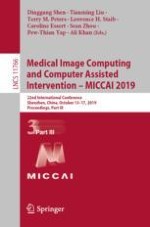2019 | OriginalPaper | Buchkapitel
Doubly Weak Supervision of Deep Learning Models for Head CT
verfasst von : Khaled Saab, Jared Dunnmon, Roger Goldman, Alex Ratner, Hersh Sagreiya, Christopher Ré, Daniel Rubin
Erschienen in: Medical Image Computing and Computer Assisted Intervention – MICCAI 2019
Aktivieren Sie unsere intelligente Suche, um passende Fachinhalte oder Patente zu finden.
Wählen Sie Textabschnitte aus um mit Künstlicher Intelligenz passenden Patente zu finden. powered by
Markieren Sie Textabschnitte, um KI-gestützt weitere passende Inhalte zu finden. powered by
